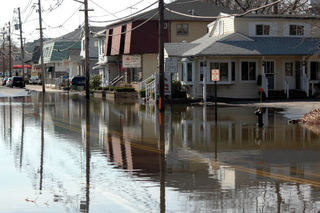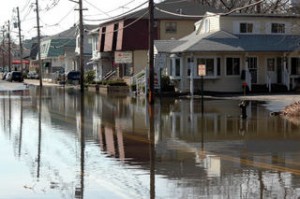
 According to the Federal Emergency Management Agency—usually known by its initials as FEMA—instead of enjoying the Emerald City, up to 40 percent of small businesses never reopen for business after suffering the impact of a man-made or a natural disaster. While insurance can pay for the loss of stock, supplies and structural damage, it cannot replace customers—the lifeblood of any business.
According to the Federal Emergency Management Agency—usually known by its initials as FEMA—instead of enjoying the Emerald City, up to 40 percent of small businesses never reopen for business after suffering the impact of a man-made or a natural disaster. While insurance can pay for the loss of stock, supplies and structural damage, it cannot replace customers—the lifeblood of any business.
Planning for an office emergency is an essential task often overlooked or postponed in order to attend to the profit-generating aspect of the business. However, an up-to-date and comprehensive emergency plan can help save lives, reduce injuries and possibly mitigate the extent of the damage done to the office structure and supplies.
The Emergency Action Plan
The Centers for Disease Control (CDC) offers a template for businesses to prepare for almost every conceivable type of emergency. This document is prepared by the employee or employees assigned by the office manager or business owner to serve as “emergency coordinator(s)” for the office. This Emergency Action Plan collects the names and contact information for any appropriate agency relative to the specific emergency. Employee information such as emergency contacts, any disabilities or chronic illnesses that might require additional assistance either during an evacuation or secondary to a disaster is also kept on file. The Emergency Action Plan should be updated at least annually and reviewed by all employees to make sure the proper reaction to disaster is understood and familiar and so that employees don’t replicate actions.
The Ready Campaign
Following the terrorist attacks of 1999, FEMA developed what the agency termed The Ready Campaign. First targeted toward the general population via family units, the program has since expanded to include businesses and government agencies. The three main goals of any Ready campaign include:
- Collecting the necessary materials for an emergency supply kit;
- Establishing an appropriate plan in case of an emergency; and
- Learning about potential disasters and specific actions to take for protection.
The Ready campaign provides information in English and Spanish for both children and adults with special information available for families or businesses.
A Basic Disaster Supplies Kit
While some adjustments are required depending upon whether a home or business disaster supply kit is being assembled, the following items are usually suggested for either type:
- A source of drinking water, recommended as one gallon per person per day, for a minimum of three days. Businesses can often utilize the large 5-gallon jugs of potable water delivered for use in water dispensers. Water fountains cannot be relied upon after a disaster as the electrical power to pump the water may be interrupted or water pipes may have burst. In this case, cases of drinking water in plastic bottles held together with shrink-wrap can be stored in a closet or storage area.
- A first-aid kit for treatment of any minor injuries.
- Both rechargeable and battery-operated flashlights with extra batteries should be on hand in the event of a power outage. These may be necessary to assist in an office evacuation by helping to locate emergency exits, to find injured employees in an inner office or at night and to signal to first responders. Fully charged rechargeable units should be utilized first. If the power outage is sustained in length, a rechargeable flashlight can be exchanged for a battery-operated one as its power fails.
Anticipating the Worst to Experience the Best
Neither the CDC nor FEMA’s work is designed to scare employees or families. However, preparation can often make the difference between an inconvenience versus an emergency situation. Keep your car’s gas tank at least half full at all times. Sign up for emergency text messages available from FEMA, the National Weather Service and your local government. Carry your cellphone’s chargers with you and keep your device fully charged. Cellphones are of little help in an emergency if the regular phone system is disrupted and your phone is running low on power. Finally, remember that cellphone provider capacities are often overwhelmed during crises; however, tweets reach Twitter and are read and shared with the appropriate authorities.
Originally posted on May 22, 2013 @ 4:20 am